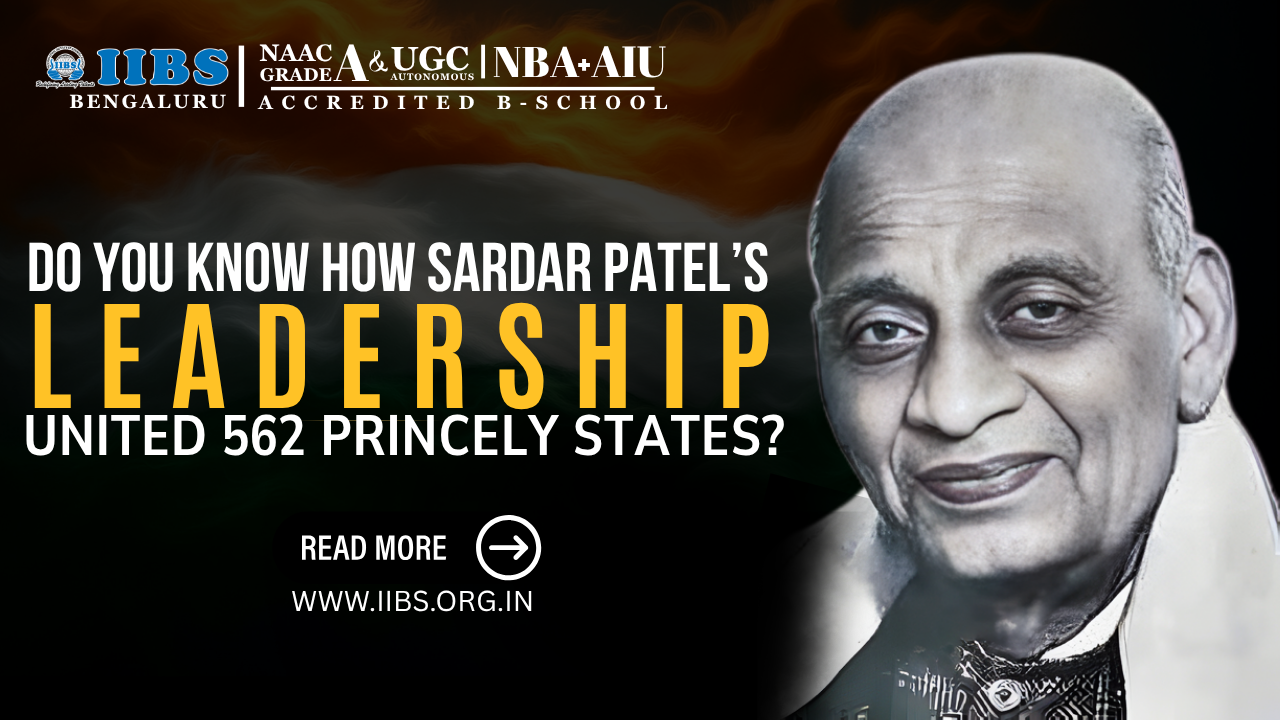Do You Know How Sardar Patel’s Leadership United 562 Princely States?

Sardar Vallabhbhai Patel united the land and the hearts of millions of Indians under one tricolor, one Constitution, and one identity — India (Bharat).
When India gained independence on 15th August 1947, the subcontinent was a mosaic of 562 princely states, each ruled by kings and nawabs who had enjoyed autonomy under British suzerainty. The challenge before the newly independent nation was monumental: how to unite these diverse and often divided territories into one strong, sovereign India.
This seemingly impossible task was accomplished by one man, Bharat Ratan Sardar Vallabhbhai Patel, fondly known as the Iron Man of India. At the time of independence, India was divided into three distinct political entities:
1. British India – directly ruled by the British Crown.
2. Princely States – ruled by local monarchs with internal autonomy.
3. Portuguese and French Colonies – still under foreign control.
The British left the decision of accession to the princely state; they could choose to join India, join Pakistan, or remain independent. Many rulers, lured by the idea of sovereignty or influenced by communal and political pressures, hesitated or refused to join either dominion. Without unity, India risked being fragmented into hundreds of small, weak nations.
As the Deputy Prime Minister and Minister of Home Affairs, Sardar Vallabhbhai Patel took charge of this herculean task of political integration. Working closely with V.P. Menon, Secretary of the State's Department, Patel devised a strategic plan that combined diplomacy, persuasion, and, when necessary, firmness.
Patel appealed to the patriotism and practicality of the rulers, emphasizing that their people shared a common destiny with the rest of India. He offered them fair terms, privileges, a privy purse, and respect in exchange for their accession. His approach was diplomatic, not coercive, yet his determination was unwavering when the unity of India was at stake.
Among the key successes of Patel’s diplomacy were the integrations of Hyderabad, Junagadh, and Kashmir, each a complex challenge that tested his leadership and resolve.
In Hyderabad, where the Nizam sought independence and even built his own army, Patel acted decisively through the swift military operation known as Operation Polo in 1948, bringing the state into the Indian Union.
In Junagadh, the Nawab’s decision to accede to Pakistan despite a Hindu-majority population prompted Patel to take immediate administrative and military action, ensuring its smooth integration into India.
In Kashmir, when tribal invaders from Pakistan attacked, Patel’s prompt support to Maharaja Hari Singh played a crucial role in securing the state’s accession.
Patel’s leadership was marked by clarity, courage, and conviction. He envisioned an India united in diversity, strong against external threats, and free from internal divisions. His efforts laid the foundation for the federal structure of governance that India follows today.
It is rightly said that if Mahatma Gandhi was the Father of the Nation, Sardar Patel was its Architect. His ability to merge hundreds of princely states into one united India stands as one of the greatest achievements in modern political history.
To honor his unmatched contribution, the Government of India celebrates October 31st, Patel’s birth anniversary, as Rastriya Ekta Diwas (National Unity Day). The Statue of Unity in Gujarat, the world’s tallest statue, stands as a symbol of his strength, vision, and unwavering spirit of national integration.
For UPSC aspirants and management students, Sardar Vallabhbhai Patel’s leadership offers timeless lessons in character, courage, and conviction.
Resolve Over Reluctance: Great leaders act decisively when challenges test their integrity and purpose. Patel’s firmness in the face of hesitation reminds aspirants that leadership demands courage, not comfort.
Unity Through Inclusion: Patel respected every state and ruler, making them stakeholders in India’s destiny. His belief in collaboration, respect, and empathy teaches that lasting success is achieved through inclusion, not dominance.
Vision Beyond Power: Patel’s mission was national strength. His example inspires aspirants to look beyond personal ambition and work for the greater good, whether for the nation or the organization they serve.
Learning from Patel means learning to lead with conviction, inclusiveness, and a vision that transcends self-interest, which is the true hallmark of great leadership.
Leave a Reply
Your email address will not be published. Required fields are marked *


0 Replies to "Do You Know How Sardar Patel’s Leadership United 562 Princely States?"